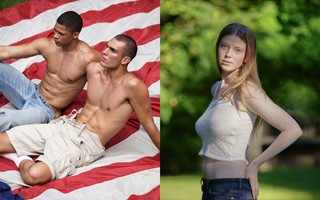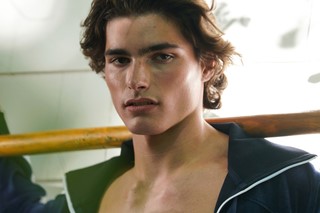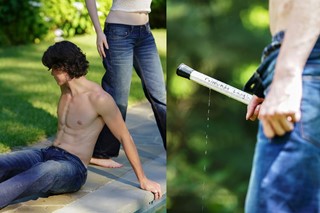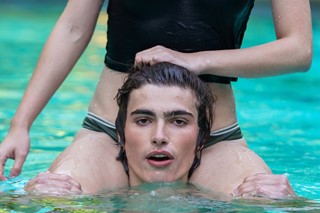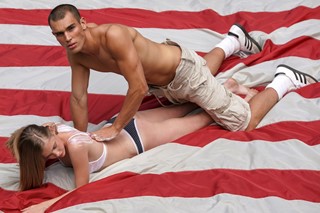Throbbing with 2000s sensuality, emerging New York-based designer Raimundo Langlois is reviving the all-American tropes of youth culture
- Who is it? Raimundo Langlois is a Parsons graduate, and founder of his emerging eponymous label
- Why do I want it? Nostalgic and sensual, the clothing parodies the preppy uniforms of American cool kids from the mid-00s, drawing from the designer’s upbringing in New York
- Where can I find it? Raimundo Langlois is available on the label’s own website
Who is it? For New York-based designer Raimundo Langlois, talking about his work doesn’t come naturally. No wall decked with reference images borders his studio, nor does any evocative designer’s influence burrow its way into his clothing’s seams – instead, the justification for his designs lies a little deeper in the psyche. Harking back to memories and reflections from his adolescence – in particular, his recollections of the homogenised fashion of American youth culture – the 26-year-old designer works to restore those preppy uniforms worn by hormonal teens, their identities still in bloom, which he looks back on with a wry smirk. “I’m trying to bridge the missing gaps in memory between something familiar and distorted,” he says. ”It’s the perversion of the familiar. It’s memory reconstruction.”
Born and raised in Upstate New York, Langlois was a teenager when brands like Abercrombie & Fitch, Hollister and Gilly Hicks were synonymous with aspiring cool kids in America and the UK. Their homoerotic campaigns (lensed by a now-disgraced Bruce Weber) throbbed with an all-American sensuality, while their stores throbbed, more literally, with nightclub-loud music, perfumed with an aggressive, nausea-inducing heft of sweet eau de toilette, sprayed and re-sprayed daily by their staff of ludicrously beautiful people. California cool had well and truly taken over; this branding was soft porn for a new generation, and had the sort of aspirational quality that leaves a stain on the minds of those infected.

Weathering the era, Langlois watched his peers fall for the ‘mall fashion’ craze – a “mundane” culture he kept at arm’s length. “I wore khaki pants and a polo that I had in five colours. It was a true uniform, and I wouldn’t wear anything else,” he says. “It was the comfort of always being the same. I’m similar now – only with jeans and a sweater.” Enrolling at Parsons to study fashion design, the designer began a side hustle modelling for the likes of Saint Laurent, Gucci and Rick Owens. “I learned a lot more through modelling than going to Parsons,” says Langlois. ”The energy and the excitement were the most memorable thing, seeing the attention to detail and how meticulous everybody was.” He later began an internship with Shayne Oliver, the trailblazer who founded the label Hood by Air in 2006, where they worked together on a never-to-be-released collection in London. Then, in 2022, Langlois launched his own label.
Why do I want it? The perverse twists on construction, riffs on queer tropes and the red-cheeked libido found in Oliver’s work emerge in Langlois’s pieces, but often require a second glance. Cargo shorts come lined with flannel, peeking just above the waistline (they look like the kind worn over loose-fitting plaid boxers with an elasticated waistband), evoking the 00s eroticism of a sagging straight man, and with it, coming-of-age fantasies of jocks in locker rooms. Naturally, they come fitted with a multi-functional lace-up fly for easy access.
Zip-up knitted sweaters are decked with pads at the shoulder to enhance a himbo frat-boy sensibility, and jeans are low-rise enough to reveal whether or not their wearer has undergone recent personal grooming. There’s a wholesomeness to the teenage dream nostalgia that Raimundo Langlois trades in, which he soaks in a sensual unease, offering in return a mocking jab at the era’s uniformity. “The sense of unease distorts my memories, which I look back on like a dream,” he says. “It’s unsettling.”
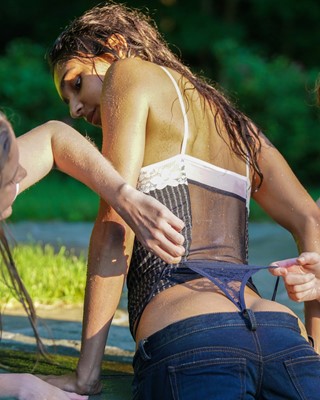
Langois collaborated with photographer Alyssa Kazew on the label’s first lookbook, with an all-American fever dream which blurs the lines between hyperreality and fantasy. “We shot it in my backyard and treehouse in Upstate New York, and most of the models were my friends,” he says. “It was surreal watching it all happen in my backyard.” The setting was the house that Langlois grew up in, allowing him to become once more a voyeur to the evocative consumeristic culture, where models, who don easy signifiers of the in-crowd, masquerade as pent-up prepsters amid their sexual awakenings.
Soon to be three years old, the label has garnered a cult following of subversive prepsters aligned with the Y2K boom. In December last year, Billie Eilish wore a layered polo shirt designed by Langlois for an appearance on Saturday Night Live, and in the days following, almost all of his stock sold out. Throughout the label’s rise, Raimundo Langlois’s perspective remains clear, with clothes that evoke a post-modern sense of parody, an in-joke that somehow remains as desirable as it was in the mid-00s. The veil may have slipped on some of those all-American brands, but the collective nostalgia remains. “People might view my clothes as too basic unless they saw the fit, touched it, experienced the details. Then they’ll see what’s special about it,” Langlois concludes. “I’m still working on establishing what this world is about. I just need to keep pushing it.”
Where can I find it? Raimundo Langlois is available on the label’s own website.
